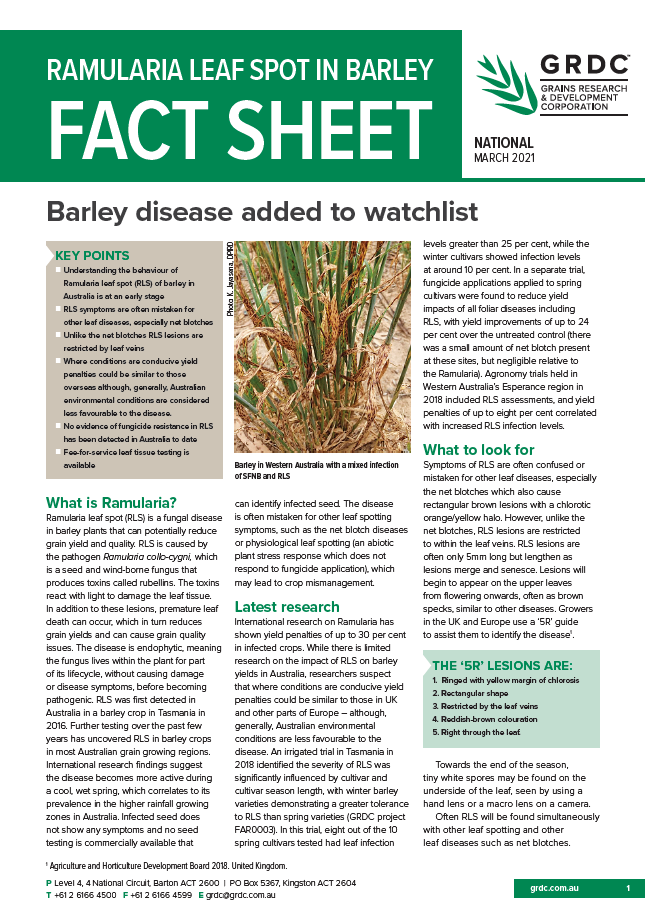Ramularia leaf spot in barley
Ramularia leaf spot in barley
Published: 24 Mar 2021
Key points
- Understanding the behaviour of Ramularia leaf spot (RLS) of barley in Australia is at an early stage
- RLS symptoms are often mistaken for other leaf diseases, especially net blotches
- Unlike the net blotches RLS lesions are restricted by leaf veins
- Where conditions are conducive yield penalties could be similar to those overseas although, generally, Australian environmental conditions are considered less favourable to the disease.
- No evidence of fungicide resistance in RLS has been detected in Australia to date
- Fee-for-service leaf tissue testing is available.
Ramularia leaf spot (RLS) is a fungal disease in barley plants that can potentially reduce grain yield and quality. RLS is caused by the pathogen Ramularia collo-cygni, which is a seed and wind-borne fungus that produces toxins called rubellins.
The toxins react with light to damage the leaf tissue. In addition to these lesions, premature leaf death can occur, which in turn reduces grain yields and can cause grain quality issues.
The disease is endophytic, meaning the fungus lives within the plant for part of its lifecycle, without causing damage or disease symptoms, before becoming pathogenic. RLS was first detected in Australia in a barley crop in Tasmania in 2016.
Download PDF
Region: National
GRDC Project Code: DAW1909-003RTX,

